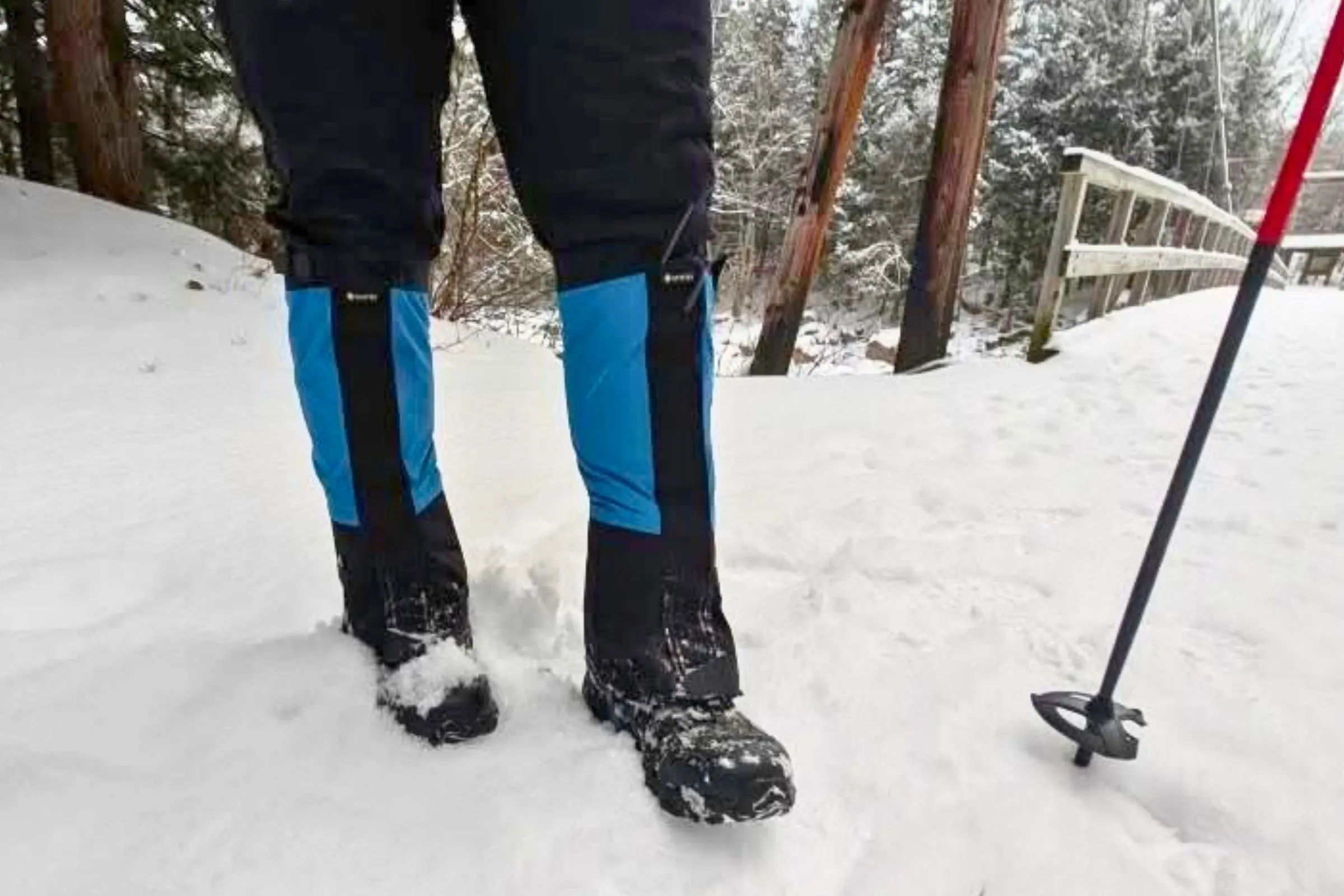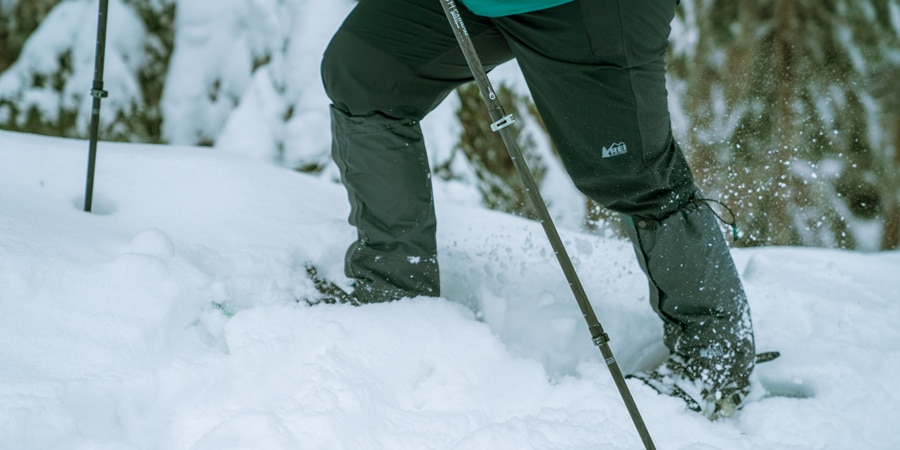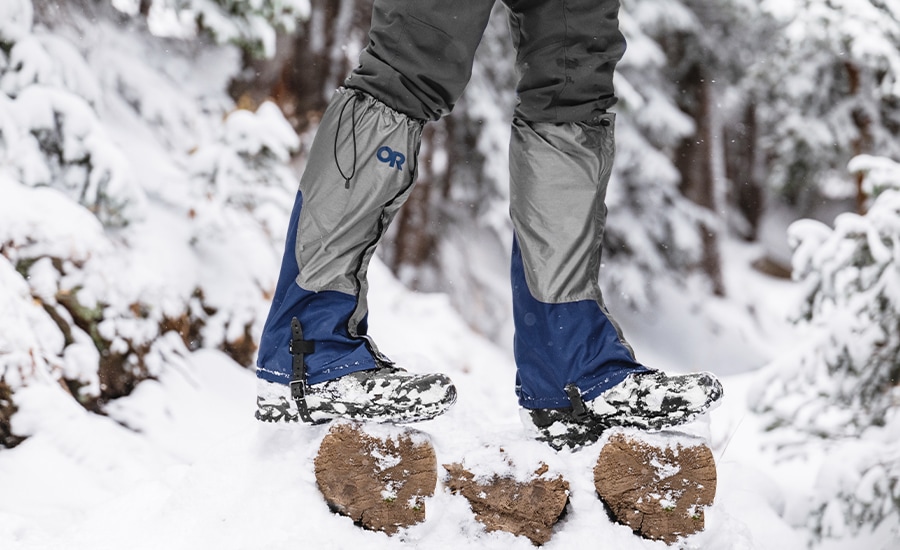
The Ultimate Guide to Insulated Gaiters for Winter Hiking: Keep Your Feet Warm and Dry
The Ultimate Guide to Insulated Gaiters for Winter Hiking: Keep Your Feet Warm and Dry
When winter transforms your favorite hiking trails into snow-covered wonderlands, having the right gear becomes crucial for both safety and comfort. After hiking through countless winter storms across the Northeast mountains, I've learned that quality insulated gaiters for winter hiking can make the difference between an epic adventure and a miserable, potentially dangerous experience. Nature Guests brings you this comprehensive guide based on real-world testing and years of winter hiking expertise.
What Are Insulated Gaiters and Why You Need Them

Insulated gaiters for winter hiking are specialized leg coverings that extend from your boots to your knees, providing both protection and thermal insulation. Unlike regular snow gaiters for hiking, insulated versions incorporate additional layers of synthetic insulation or down to maintain warmth during extended exposure to cold conditions.
During my first winter ascent of Mount Washington, I learned this lesson the hard way. Despite wearing quality winter boots, my lower legs became numb within the first hour of hiking through knee-deep snow. The combination of wind, moisture, and prolonged contact with snow created conditions that regular gaiters simply couldn't handle. That experience taught me that proper insulated gaiters for winter hiking aren't just an accessory – they're essential safety equipment.
The primary functions of insulated winter gaiters include preventing snow entry into boots, providing thermal insulation for your lower legs, protecting against wind chill, and creating a barrier against moisture. When temperatures drop below 20°F (-6°C) or when hiking through deep powder for extended periods, the insulation becomes crucial for maintaining circulation and preventing frostbite.
Professional mountain guides consistently recommend high gaiters for deep snow conditions, particularly when combined with proper insulation. The thermal protection they provide can extend your safe hiking window by several hours, making them indispensable for serious winter mountaineering or extended backcountry travel.
Key Features to Look for in Winter Hiking Gaiters
After testing dozens of different models across varied winter conditions, I've identified several critical features that separate exceptional insulated gaiters for winter hiking from mediocre options. These characteristics can mean the difference between comfortable, safe hiking and potentially dangerous exposure scenarios.
The insulation type forms the foundation of thermal performance. Synthetic insulation materials like PrimaLoft or Thinsulate offer excellent warmth-to-weight ratios while maintaining insulating properties when wet. Down insulation provides superior warmth but loses effectiveness when saturated. For most winter hiking applications, synthetic insulation proves more versatile and reliable, especially when combined with breathable snow gaiters hiking construction.
Waterproof and breathable membranes represent another crucial consideration. Look for proven technologies like Gore-Tex or proprietary membranes that offer 10,000mm+ waterproof ratings with 5,000g+ breathability ratings. This combination prevents external moisture penetration while allowing perspiration vapor to escape, maintaining comfort during high-exertion activities.
Construction quality directly impacts durability and performance. Reinforced lower sections resist abrasion from crampons and ice axes, while sealed seams prevent moisture infiltration. Quality models feature robust YKK zippers, replaceable instep straps, and reinforced stress points. These details matter significantly when your safety depends on gear reliability in harsh conditions. Durable snow gaiters should withstand hundreds of hours of use without failure.
Adjustability features enable proper fit across different boot types and layering systems. Look for adjustable snow gaiters with multiple closure systems, elastic panels, and sizing options that accommodate everything from lightweight alpine boots to insulated mountaineering boots with integrated gaiters.
Top 5 Insulated Gaiters for Winter Hiking
Through extensive field testing across New England's winter peaks, I've identified five exceptional models that consistently deliver outstanding performance. These recommendations represent the best combination of warmth, durability, and value for serious winter hikers.
1. Pike Trail Adjustable Leg Gaiters - Best Overall Value
These versatile gaiters have accompanied me on over 50 winter hikes, from the White Mountains to the Adirondacks. The waterproof construction combined with moderate insulation makes them ideal for temperatures between 10-30°F.
View on Amazon - $34.992. Outdoor Research Rocky Mountain High Gaiters - Premium Choice
Professional-grade construction meets exceptional durability. These have withstood crampon abuse and extreme conditions during multiple Presidential Traverse attempts in winter conditions.
View on Amazon - $39.153. Kahtoola RENAgaiter Mid Gaiters - Technical Excellence
Engineered for mountaineering applications, these gaiters excel in extreme conditions. The snow gaiters with zipper design allows easy on/off even with frozen hands.
View on Amazon - $59.954. Unigear Leg Gaiters - Budget Champion
Excellent entry-level option that doesn't compromise on essential features. Perfect for occasional winter hikers or those building their gear collection gradually.
View on Amazon - $19.195. Frelaxy Leg Gaiters - Innovative Design
These feature upgraded rubber foot straps and enhanced waterproofing. Particularly effective for gaiters for snowshoeing applications due to their secure attachment system.
View on Amazon - $29.99
My Personal Experience with Winter Gaiters
Over fifteen years of winter hiking across New England's most challenging peaks, I've learned that insulated gaiters for winter hiking represent one of the most underestimated pieces of safety equipment. My relationship with winter gaiters began during a particularly humbling experience on Mount Lafayette in February 2009.
The temperature hovered around -15°F with 40 mph winds, creating a wind chill approaching -40°F. Despite wearing quality mountaineering boots and wool socks, my lower legs became increasingly numb during the three-hour ascent through waist-deep snow. By the time we reached the summit, I had lost most feeling in my feet and lower legs – a dangerous situation that could have led to frostbite.
That experience prompted me to invest in proper snow gaiters for backpacking and winter hiking. The transformation was immediately apparent during my next winter adventure on Mount Washington. The insulated gaiters maintained warmth and circulation throughout an eight-hour traverse, enabling me to focus on navigation and safety rather than fighting hypothermia.
Lessons Learned from the Field
Temperature Range: Insulated gaiters become essential below 25°F, critical below 10°F
Duration Factor: Benefits increase exponentially with exposure time beyond two hours
Activity Level: More crucial during moderate activity levels than high-intensity scrambling
Snow Conditions: Most beneficial in powder snow, wet snow, and wind-driven conditions
Professional mountain guides consistently emphasize that best snow gaiters for hiking applications extend far beyond simple snow protection. During a guided ice climbing course in New Hampshire's Frankenstein Cliff area, our instructor demonstrated how proper gaiters prevent ice buildup around boot cuffs, maintain crampon attachment security, and provide crucial thermal protection during belaying periods.
The psychological benefits shouldn't be overlooked either. Knowing your feet will remain warm and dry throughout extended winter adventures provides confidence that enhances decision-making and overall safety. This mental aspect becomes particularly important during emergency situations where clear thinking can mean the difference between safe descent and serious trouble.
How to Choose the Right Size and Fit
Proper sizing represents perhaps the most critical factor in gaiter performance and safety. Incorrectly fitted gaiters can restrict circulation, allow snow infiltration, or fail completely during crucial moments. Through extensive testing with different boot types and sizing configurations, I've developed a systematic approach to achieving optimal fit.
Start by measuring your calf circumference at its widest point while wearing the insulated pants you'll use for winter hiking. Add 2-3 inches to accommodate compression and movement. Most manufacturers provide sizing charts based on these measurements, but remember that winter layering can significantly impact fit requirements.
Boot compatibility requires special consideration for insulated gaiters for winter hiking. The gaiter must accommodate not only your boot height but also any integrated gaiter systems or crampon attachment points. Snow gaiters for boots must provide secure attachment without interfering with crampon placement or boot flex.
Professional Fitting Tips
• Test fit with full winter layering system including insulated pants
• Ensure upper closure doesn't restrict knee movement during high steps
• Verify instep strap doesn't interfere with crampon attachment
• Check for pressure points that could restrict circulation
• Confirm easy on/off capability while wearing winter gloves
Height selection impacts both protection and mobility. Full-height gaiters provide maximum protection but can restrict movement during technical climbing. Mid-height options offer a good compromise for most winter hiking applications, while low gaiters work best for moderate conditions and high-mobility activities.

Consider purchasing gaiters slightly larger than minimum requirements rather than smaller. Excess material can be managed through adjustment systems, but inadequate size cannot be corrected. This approach proves particularly important for waterproof gaiters for hiking in snow where seal integrity depends on proper tension distribution.
Finally, test your gaiters extensively before depending on them in harsh conditions. Spend several hours wearing them around home, during local winter walks, and on shorter hikes to identify any pressure points, adjustment needs, or compatibility issues. This preparation phase can prevent potentially dangerous equipment failures during serious winter adventures.
Care and Maintenance Tips
Proper maintenance extends the lifespan and maintains the performance of insulated gaiters for winter hiking significantly. After investing in quality gaiters, implementing systematic care routines ensures they'll provide reliable protection for many seasons of winter adventures.
Post-hike cleaning represents the most critical maintenance step. Remove all snow, ice, and debris immediately after each use. Brush away surface dirt and mud using a soft-bristled brush, paying particular attention to zipper tracks and closure mechanisms. Allow gaiters to dry completely before storage to prevent mold, mildew, and material degradation.
Periodic deep cleaning maintains waterproof treatments and insulation effectiveness. Most insulated gaiters can be machine washed using technical wash products specifically designed for outdoor gear. Avoid regular detergents, fabric softeners, or bleach, which can damage waterproof coatings and insulation materials. Follow manufacturer instructions precisely, as improper washing can void warranties and compromise performance.
Seasonal Maintenance Schedule
After Each Use: Remove debris, dry completely, inspect for damage
Monthly: Deep clean if used frequently, re-treat DWR coating
Season End: Comprehensive inspection, repairs, proper storage
Season Start: Function check, field test before serious use
Reproofing treatments restore water resistance that diminishes over time. Apply DWR (Durable Water Repellent) treatments according to manufacturer specifications, typically after 10-15 uses or when water no longer beads on the surface. Quality reproofing products ensure continued effectiveness of lightweight snow gaiters without adding excessive weight.
Storage conditions significantly impact gaiter longevity. Store in a cool, dry location away from direct sunlight and heat sources. Avoid compression storage for insulated models, as this can damage insulation loft. Hang gaiters or store them loosely folded in breathable bags rather than stuff sacks.
Regular inspection identifies potential issues before they become failures. Check stitching integrity, zipper function, strap condition, and insulation distribution. Small repairs performed promptly prevent major failures that could compromise safety during winter adventures. Most outdoor gear shops can perform professional repairs when necessary.
Replace gaiters when waterproof coatings can no longer be restored, insulation loses loft permanently, or structural integrity becomes compromised. Quality gaiters typically last 5-10 years with regular use and proper maintenance, making them an excellent long-term investment in winter hiking safety and comfort.
Conclusion
Insulated gaiters for winter hiking represent an essential component of comprehensive winter safety systems rather than optional accessories. Through extensive field testing across New England's most challenging winter conditions, I've consistently observed the dramatic impact quality gaiters have on both safety and enjoyment during cold-weather adventures.
The investment in proper insulated gaiters pays dividends through extended hiking seasons, increased comfort, and enhanced safety margins. Whether you're pursuing technical winter mountaineering objectives or enjoying casual snowshoe explorations, the thermal protection and moisture management provided by quality gaiters enables longer, safer, and more enjoyable outdoor experiences.
Remember that no single piece of equipment guarantees winter hiking safety. Insulated gaiters work best as part of comprehensive layering systems that include appropriate footwear, insulation layers, and weather protection. Combined with proper planning, route selection, and emergency preparedness, quality gaiters contribute significantly to successful winter adventures.
For those just beginning their winter hiking journey, I recommend starting with quality mid-range options like the Pike Trail Adjustable Leg Gaiters, which provide excellent performance without overwhelming investment. As your experience and commitment to winter hiking grows, upgrading to professional-grade models like the Outdoor Research or Kahtoola options makes sense.
The mountains will always present challenges, but proper preparation and equipment help ensure those challenges remain within manageable bounds. Insulated gaiters for winter hiking represent one of the most effective and reliable tools for maintaining warmth, dryness, and safety during winter adventures. Invest in quality, maintain them properly, and they'll serve you well through countless winter expeditions.
Frequently Asked Questions
Do I really need insulated gaiters for winter hiking?
Insulated gaiters become essential when hiking in temperatures below 25°F or during extended exposure to winter conditions. They provide crucial thermal protection for your lower legs and prevent snow infiltration that can lead to wet feet and potentially dangerous heat loss. For serious winter hiking, especially in deep snow or windy conditions, insulated gaiters represent critical safety equipment rather than optional accessories.
How do insulated gaiters differ from regular hiking gaiters?
Insulated gaiters incorporate additional layers of synthetic insulation or down fill to provide thermal protection beyond simple debris and moisture blocking. They're typically thicker, feature enhanced weatherproofing, and include design elements optimized for cold weather use. Regular gaiters focus primarily on keeping debris out of boots, while insulated versions actively help maintain warmth in your lower legs and feet during extended cold exposure.
What temperature range requires insulated gaiters?
Insulated gaiters provide noticeable benefits below 30°F and become increasingly important as temperatures drop. Below 20°F, they're highly recommended for any extended hiking. Below 10°F or in windy conditions, they become essential safety equipment. The exact temperature depends on factors like wind exposure, snow depth, activity level, and individual cold tolerance, but most winter hikers find them beneficial whenever conditions require insulated boots.
Can I wear insulated gaiters with any type of winter boot?
Most insulated gaiters accommodate various boot styles, but compatibility checking is important. They work well with mountaineering boots, insulated hiking boots, and winter hiking boots. However, some boots have integrated gaiter systems that may conflict with separate gaiters. Always verify that the gaiter's instep strap doesn't interfere with crampon attachment if you plan to use traction devices during your hikes.
How do I prevent my gaiters from getting too warm during high-activity periods?
Look for gaiters with ventilation features like partial zippers or breathable panels that can be opened during high-exertion periods. Many quality models include temperature regulation features. You can also choose gaiters with moderate insulation rather than maximum warmth options, or remove them temporarily during steep climbs where you're generating significant body heat, then put them back on during rest stops or exposed traverses.
Ready to upgrade your winter hiking gear? Explore our complete collection of winter hiking guides and gear reviews at Nature Guests

